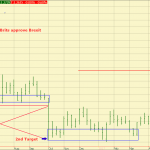Remember “the black hole?”
Late last month, Wells Fargo put out a truly amusing piece called “Passive Is The New QE.” The premise was that passive flows are acting like QE for U.S. stocks. Here’s what Wells wrote:
As QE seemed to exaggerate trends in the fixed income markets, so it appears that Passive equity flows are exaggerating stock movements. Recently we’ve observed consistent net inflows to Passive Equity funds, which have morphed into a type of Black Hole. Money goes in and stocks never come out (as least for now).
Yes, “at least for now.”
That is part and parcel of the dynamic that’s driving active management to the brink of extinction. When passive flows are driving benchmarks inexorably higher, it becomes well nigh impossible to consistently best those benchmarks especially when you are starting from behind by virtue of charging fees that are multiples of what it costs to replicate those benchmarks with a passive index fund.
This dynamic has been supercharged by what Howard Marks has called a “perpetual motion machine.” As these passive flows to cap-weighted indexes levitate the “super stocks”, those “super stocks” become synonymous with some the factors used to create smart-beta products – factors like low vol. and momentum. Well, flows into those products only serve to drive that same handful of stocks higher still, in a snowball effect that drives the benchmarks higher with every turn.
So what does active management do? Recall what Wells said in the note mentioned above:
Clients have said repeatedly that any time they’ve sold or tried to reposition in the last 3, 6, or 12 months, they’ve come to regret it. To fix this issue, they’ve decided to all together stop, or dramatically slow, their selling and it’s worked—relative performance continues to improve.
That is all kinds of hilarious for obvious reasons, and the latest evidence of this same dynamic comes from Goldman’s quarterly hedge fund monitor. Consider this:












Leave A Comment